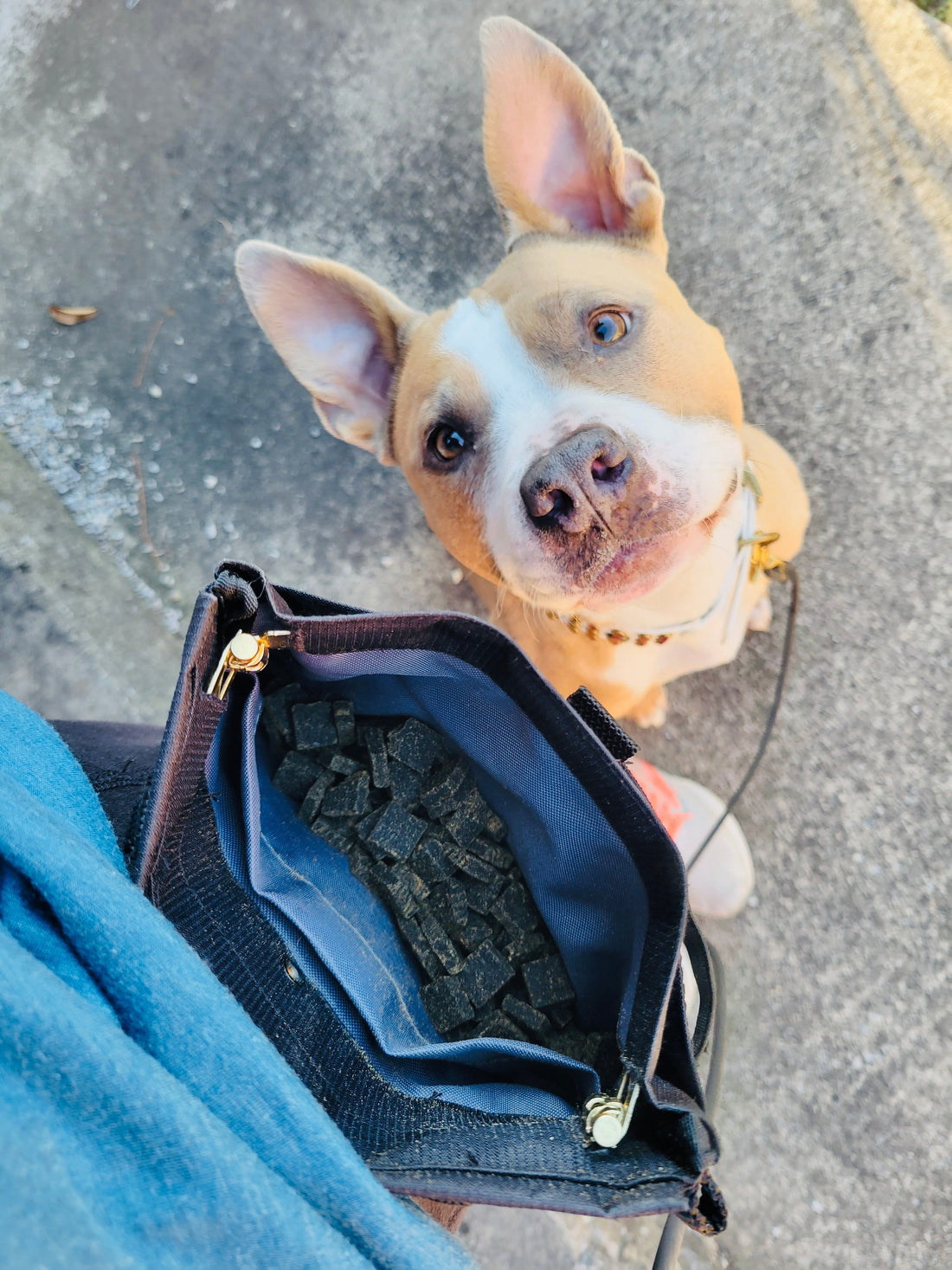Learning new tricks isn't exclusive to puppies – it's a delightful adventure for dogs of all ages! In addition to fostering a stronger bond between you and your furry friend, teaching tricks provides essential mental stimulation. Whether your canine companion is a seasoned pro or a young pup, the key lies in positive reinforcement and the right treats.
Optimized Treats for Training Success:
To kick off your training sessions, ensure you have the perfect treats. Jiminy's training treats were designed in collaboration with animal behavior expert Ian Dunbar and are tailored for success. What makes a great training treat?
- Size & Shape: Small, easy-to-consume treats that maintain your dog's focus.
- Low Calorie: Ideal treats with fewer than 3 calories each.
- Convenient: Easy to carry, non-greasy, and non-crumbly.
- Healthy: Supplement your dog's diet with added health benefits.
- Delicious: Treats that excite your dog, motivating them to work for rewards.
These treats are also great for dogs with allergies and they're planet-friendly. So much to love!
Positive Reinforcement
We love Ian’s approach, which is centered around positive reinforcement. Positive reinforcement is a training technique that involves rewarding desired behaviors in order to encourage their repetition. In the context of dog training, positive reinforcement focuses on providing a reward, such as treats, praise, or toys, immediately after a dog exhibits a behavior that the trainer wants to reinforce.
Embrace Ian's positive reinforcement approach, centered around rewarding desired behaviors to encourage their repetition. Here's how it works:
- Desired Behavior: Identify the behavior you want to encourage, whether it's basic commands or fun tricks.
- Immediate Reward: Instantly reward your dog with treats, praise, or toys when they exhibit the desired behavior.
- Consistency: Reinforce the behavior consistently to establish a strong connection between the action and the reward.
- Timing: Give the reward immediately after the desired behavior for clear association.
- Varied Rewards: Keep training sessions interesting with a variety of rewards.
- Gradual Reduction of Treats: Reduce treat frequency over time, aiming for behavior without constant treats.
Tricks to Try
Before diving into tricks, ensure your dog knows basic commands like "sit," "down," "come," and "stay." Now, let's explore some fun tricks:
- Paw – Begin with your dog in the sitting position, and hold a treat in a closed fist in front of them, leaving your other hand free. Tap one of your dog’s front paws with your free hand. Typically dogs will raise their paw to get the treat, and as they do catch it with your free hand. Repeat “shake” and give them the treat.
- High Five – This one is just a variation on “Paw”, but it is super cute and makes it seem like your dog is celebrating with you! Once they’ve mastered “Paw”, start to encourage the High Five motion. Gradually raise your hand slightly higher, encouraging your dog to lift their paw higher. If they raise it towards your hand, even just a little, praise and reward them (make sure you have the treat ready to go!).
- Spin – Start by holding a treat in front of your pup’s nose and slowly moving it towards the side. Once they start to turn their head to follow the treat, continue in a circle while saying “spin.” Give a treat immediately once they complete the circle. You can follow this with a “good spin.”
- Rollover – This is a great trick to teach once your dog has mastered “down.” Start with your dog in a down position, and hold a treat near their nose. Move the treat towards their shoulder, and their nose will follow. Once they lay on their side make sure to praise them and give them a treat! Continue building on to the command until they completely roll over, saying “roll” and giving them a tasty treat.
- Crawl – Begin by asking your dog to lie down. This is the starting position for teaching the crawl. Hold a treat close to your dog's nose to get their attention. Move the treat slowly along the ground in front of your dog, just a few inches away from their nose. The goal is to encourage them to follow the treat. As your dog follows the treat, they will naturally start to crawl forward. Use encouraging words like "crawl" or any command you choose for this trick. s soon as your dog makes any crawling movement, even if it's just a small shuffle forward, immediately reward them with the treat and praise. Positive reinforcement is crucial. Gradually increase the distance you ask your dog to crawl. Keep the treat low to the ground to maintain the crawling motion.
Training Tips
- Patience is key: Every dog learns at their own pace; be patient and positive.
- Consistency: Use the same commands and rewards consistently.
- Short, fun sessions: Practice regularly in short, enjoyable sessions.
- Different environments: Generalize tricks by practicing in various locations and situations.
Share the joy – send us pictures and videos of your pup showcasing their new tricks! Unleash the brilliance within your furry friend with positive training and tasty treats.




